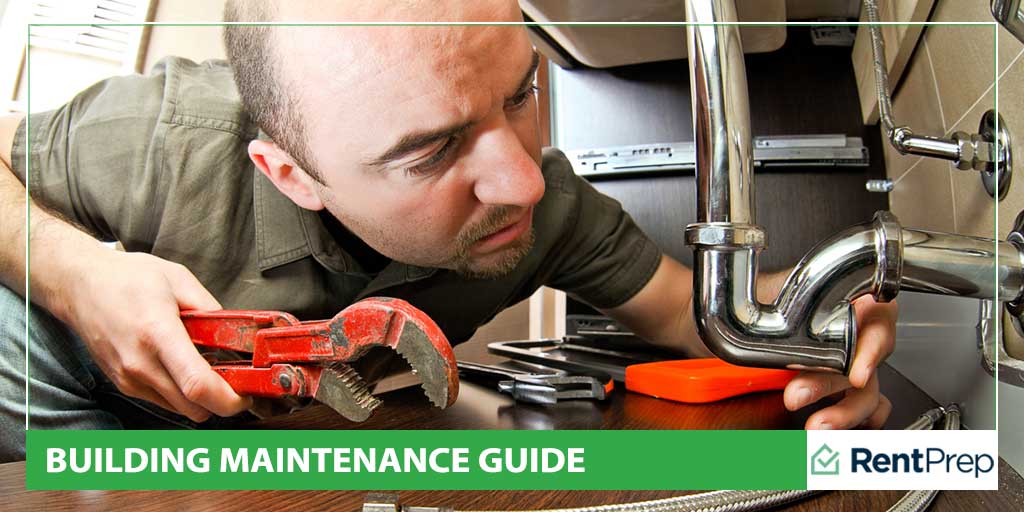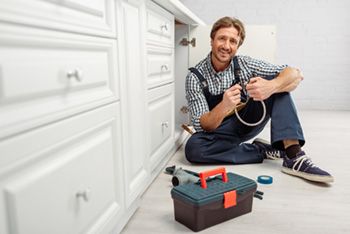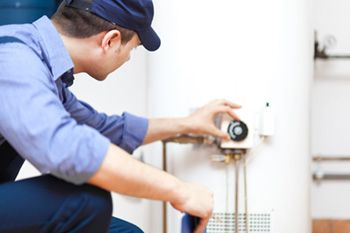
Managing buildings with multiple units or homes that require regular servicing brings new issues to landlords that you might not be familiar with. Preventative maintenance is essential for the long-term profitability of buildings, but not all landlords know how to manage these tasks effectively.
What you need to succeed in this respect is a high-quality building maintenance guide, and RentPrep is here to help you create your own.
Letting buildings sit without regular checks and repairs will lead to costly repairs. You can save your business lots of time and money by actively checking things before they break. However, it’s hard to know where to start.
Today, walk through the process of building maintenance services and how to set up your plan for addressing preventative maintenance effectively.
Table Of Contents On Building Maintenance Services
Keeping tabs on what needs to be done and the condition of all rental properties can seem impossible, but it’s essential to your business’s success. Follow along as we cover what should be monitored and how to do that efficiently:
- What Is Building Maintenance?
- What Is On A Building Maintenance Checklist?
- How To Use Your Checklist
- FAQs: Building Maintenance Repairs
- Create Your Facility Maintenance Checklist Now
What Is Building Maintenance?

Building maintenance is the process of maintaining the condition of all parts of a building to ensure that it is safe, habitable, and not in need of any repairs.
Landlords and property owners with large complexes of multiple housing units need to ensure the buildings that encompass these units are in good condition. This may require daily, weekly, and monthly maintenance checklists. Even landlords working with single-family homes may want to incorporate this type of maintenance checklist into their procedures.
Why Do Building Maintenance Services Matter?
Good building maintenance ensures the longevity of your investment. It might seem like skipping some maintenance will allow you to save money, but those costs will end up multiplying down the line. Small problems become more and more costly as they spread, while addressing things early on saves a lot.
You will find many benefits from implementing a preventative building maintenance program at your rental properties:
- Decreases downtime of necessary equipment
- Reduces the overall number of repairs needed
- Keeps vacancy low by improving tenant experience
- Helps facility staff be more productive and less reactive
- Reduces overtime and staff expenses
- Improves safety
- Reduces liability
- Extends the life of appliances, equipment, etc.
It’s critical to the long-term sustainability of your building to keep up with regular maintenance checks. Here’s what you should be looking for.
What Is On A Building Maintenance Checklist?
#1: Exterior Construction
Inspect the exterior parts of the building. Walls, masonry, foundations, arches, roofs, canopies, and all other exterior parts should have scheduled inspections at appropriate intervals.
Landlord inspection lists often include:
- Inspect roofing, roof drains, downspouts, and gutters
- Check for any tears in the roof flashing
- Look for exterior hazards such as standing water
- Ensure the security of all exterior stairs and rails
- Inspect condition of driveways, parking lots, sidewalks
#2: Doors And Windows
Doors and windows do not need to be replaced often, but they may need small repairs. Locks and hinges can start to wear over time, and keeping them in good condition is necessary for tenant security. Check small parts of all doors and windows yearly to ensure they are still strong and secure.
#3: Lighting
Ensure that all exterior and interior lights are functioning safely and correctly. In addition to replacing bulbs, you want to ensure that switches, transformers, and all other control gear are working correctly. Cleaning lighting surfaces should be done regularly, but additional inspections can be done quarterly.
When inspecting lighting, don’t forget to ensure that outdoor lights are functioning correctly and lighting the intended areas. For example, tenants will feel safe in a lit parking lot, so you don’t want to overlook that area.
#4: Plumbing
For landlords, surprise plumbing issues can be a total nightmare. It’s often hard to find plumbing issues until they explode, but there are some things to consider checking. Landlords often inspect the following when doing facility preventative maintenance:
- Replace valves at suggested intervals
- Check all couplings for leaks
- Inspect water heater and boiler; service as recommended
- Replace and refill oils, lubricants, and refrigerants as needed
- Inspect sewage and sump pumps yearly
It’s best to have a specialist check out high-priority areas, such as swimming pools, yearly and before periods of heavy use. Otherwise, make sure to include plumbing inspections on your quarterly checklist.
#5: Fire Safety Equipment
Many areas require that fire safety equipment be serviced yearly, at a minimum. Ensure that any and all fire safety equipment is properly stored, displayed, and serviced according to applicable ordinances. Buildings with crawl spaces, fire escapes, and sprinkler systems should also have these inspected on a regular basis.
#6: HVAC
All HVAC systems will need regular cleaning and maintenance. It’s best to set up a recurring visit from specialists to ensure these units don’t break without warning. Tenants and staff will be very uncomfortable if the HVAC system goes down, so you should prioritize having it checked, especially before periods of heavy use. It’s recommended to do this twice a year.
#7: Interior Hazards
Interior hazards in common areas and even within rental units should be inspected regularly to prevent injury. Safety hazards can develop from broken floorboards, chipping paint, or loose lighting fixtures. Monitor high-risk areas closely when doing preventative inspections.
Additionally, you’ll want to ensure that all smoke detectors, sprinklers, and carbon monoxide monitoring systems are working properly. Replace batteries at regular intervals, and make sure all emergency exits are functional.
#8: Electrical
Like plumbing, checking up on your electrical system can be challenging unless a problem occurs. Plan to have your building’s electrical system checked by a professional every four years. In some areas, there may be requirements for when this should occur, so review your local laws to plan your preventative maintenance timeline for electrical items.
How To Use Your Checklist
Once you have a general checklist in place, it’s time to implement it. These four steps are essential to the success of implementing your maintenance checklist.
Step 1: Inspect
Set up routine inspections for the categories you selected above. Depending on the item, these may occur daily, weekly, monthly, or annually. Schedule these in advance.
Step 2: Detect
While performing inspections, be vigilant. Your goal is to detect potential or developing issues. For example, you may notice that one HVAC unit seems to be running at a slower rate than optimal.
Step 3: Correct
Schedule the necessary repairs as soon as possible. You can reduce the overall downtime and lower your expenses by correcting the issue before things break entirely.
Step 4: Prevent
Continue to do inspections. With each previous inspection, you’ll know when to schedule maintenance, what to look out for, and how to prevent future problems.
Bonus Step: Tenants And Preventative Maintenance

Another thing to remember about preventative maintenance is that your tenants also play a part in this process. If they’re attentive, diligent tenants may alert you about issues that would otherwise go unnoticed. Lackluster tenants may exacerbate problems beyond what would occur otherwise.
While it’s true that you can withhold tenant security deposits to cover damage, some types of damage are difficult to comprehend or cover with this method. This is especially true when damage is done to a multi-unit building, affecting other units.
Ensuring that your tenant screening measures are up to par can assist in your preventative maintenance. Choosing tenants who are thoughtful, clean, and committed to maintaining the unit in good condition helps your overall servicing.
If you aren’t sure how to improve your tenant screening, it might be time to bring in some outside assistance. Our easy-to-use screening services at RentPrep set up landlords of any experience level with simple tools. Choose the right tenants today by starting your screening process with RentPrep.
FAQs: Building Maintenance Repairs
How do I create a maintenance checklist?
The best way to start making a maintenance checklist is to list all the main categories that should be included:
- Exterior
- Interior
- HVAC
- Safety systems
- Fire safety
- Access control systems
- Plumbing
- Electrical
- Entrances and exits
From there, add items under each category covering what you believe should be inspected regularly. Think about the types of properties you have and what should be checked. You can even create specific checklists for individual properties.
Remember that you can (and should) continue adding to your checklist. You may find that you forgot to check the gutter on one of your properties until it was very damaged, in which case you can add it to the exterior category. Consider any maintenance checklist that you make as a work in progress. Things can be added and removed as needed.
If you have contractors or property managers working with you on facilities, they should be involved in this process. The facility managers who know the property best will be able to give you perspective on what should be checked and how often those inspections should occur. You may consider bringing in a third-party inspector to help you plan your initial checklist. This up-front investment will surely pay off in the long run.
Is a maintenance checklist the same as a rental property inspection?
No, maintenance checklists and rental property inspections are not the same, though there may be overlapping items.
Maintenance checklists aim to find developing problems and plan preventative maintenance before small issues become costly problems. These inspections also allow property owners to plan out future repairs, rebuilds, and redevelopments more accurately.
The purpose of rental property inspections is to see the condition of a rental unit or a potential investment property.
Move-in and move-out property inspections verify the property’s condition and that nothing beyond normal wear-and-tear happened during a tenancy. Mid-lease property inspections are done to ensure there are no ongoing issues that need to be fixed for the tenant and that the tenant is keeping the apartment in the appropriate condition.
Sometimes, these two types of inspections can be confused. The critical point to remember is that maintenance inspections and checklists are typically preventative, while property inspections seek out ongoing problems or verify a rental unit’s current condition.
How is preventative maintenance different from repairs?
Preventative maintenance is done to ensure things do not break or become completely unusable. For example, preventive maintenance on HVAC systems ensures that all parts are functioning properly and that filters have been updated accordingly. This maintenance helps keep things running smoothly and prevents breaks.
If HVAC preventative maintenance isn’t done regularly, the system could break down and need to be repaired. Repairs are typically much more costly.
There can be some overlap between these two categories. Preventative maintenance will include doing some repairs, but the reason is often to prevent more significant issues while repairs address current and ongoing issues.
Who is responsible for the cost of preventative maintenance?
The property owner will cover the cost of preventative maintenance, with very few exceptions. If it is without any doubt that tenant neglect or irresponsibility has created a problem, it may be possible to hold them responsible for its repair.
However, preventative maintenance is typically focused on the building at large and not specific rental units. Landlords are responsible for the cost of repairing their buildings and facilities. Remember that additional specification on who is responsible for what costs may also be outlined in your state’s landlord-tenant laws, so don’t forget to familiarize yourself with those as well.
Create Your Facility Maintenance Checklist Now
Are you ready to dive in and create your own facility maintenance checklist?
If you’re already managing buildings, the best time to make this checklist is now. Your list might not include every category covered today, and you may need to expand it over time as you learn what you should be checking more frequently. However, simply having a facility maintenance checklist ready to go is the start you need to improve your business.
Don’t let profits slip away by avoiding building checks and maintenance upkeep tasks. Ensure you are checking essential categories regularly:
- Check HVAC, plumbing, electrical, and safety systems at least once per year.
- Ensure outside structures are holding up as they should, especially after significant weather events.
- Keep a regular inspection schedule regardless of a tenancy; don’t skip preventative maintenance because a unit is occupied.
Take charge of your buildings. The better condition your building is in, the fewer repairs and remodels there will need to be. Catching problems early is key for keeping your buildings rentable and safe. Get started with your preventative maintenance checklist today.

